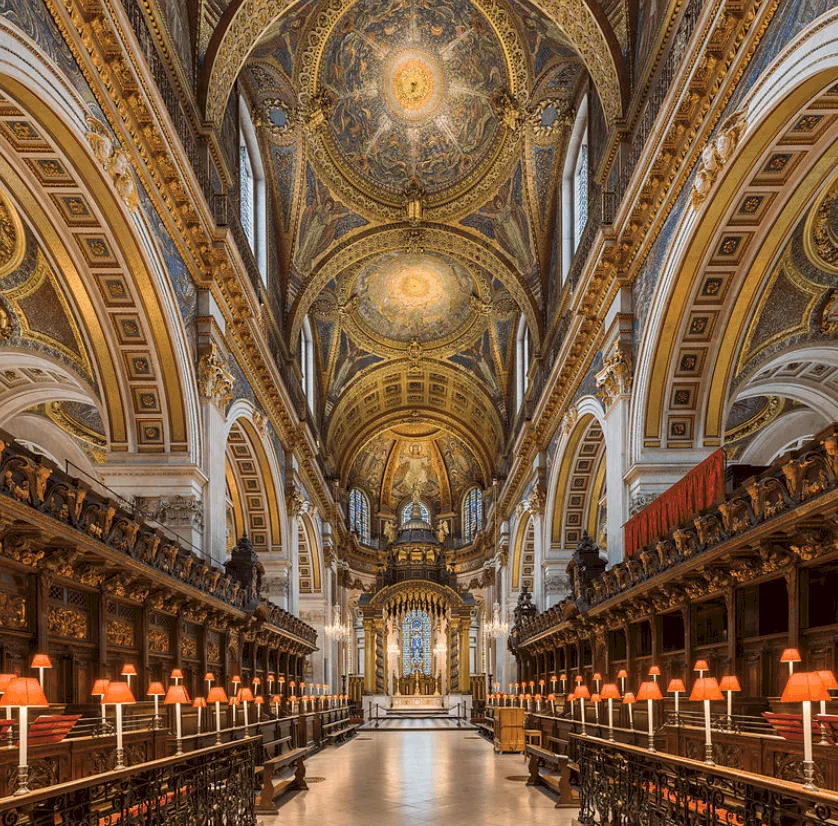This famous church was dedicated in the early 7th century and ended up becoming one of the most important buildings in the history of the United Kingdom.
In this post, you’ll discover the ultimate list of facts about St Paul’s Cathedral, an amazing church in London.
1. It’s located on the highest point in the City of London
St Paul’s Cathedral is one of the most famous buildings in London. It’s located right within the historical center of the city called the “City of London” and it serves as the mother church of the Diocese of London.
It was constructed on top of a little hill called “Ludgate Hill,” which is the highest point in the city of London at 17.6 meters (58 feet) above sea level. The exact highest point is just north of the Cathedral.
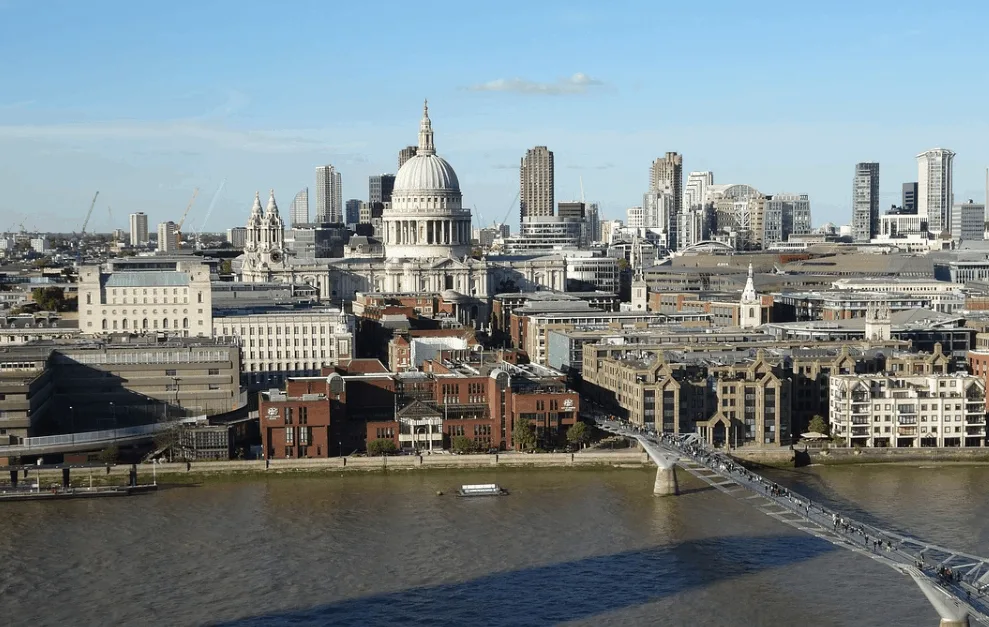
2. You can get a great view right across on a fairly recent London Bridge
There’s a bridge crossing the River Thames in a direct line with the Cathedral. The Millennium Bridge is a footbridge that was constructed fairly recently as it was completed in 2000 and offers stunning views of St Paul’s.
The “Wobbly Bridge” which it’s mockingly called after a botched opening in June 2000 is located just upstream of the most famous bridges in London, the “London Bridge” (the oldest bridge in London) and the “Tower Bridge” (the most iconic bridge in London).
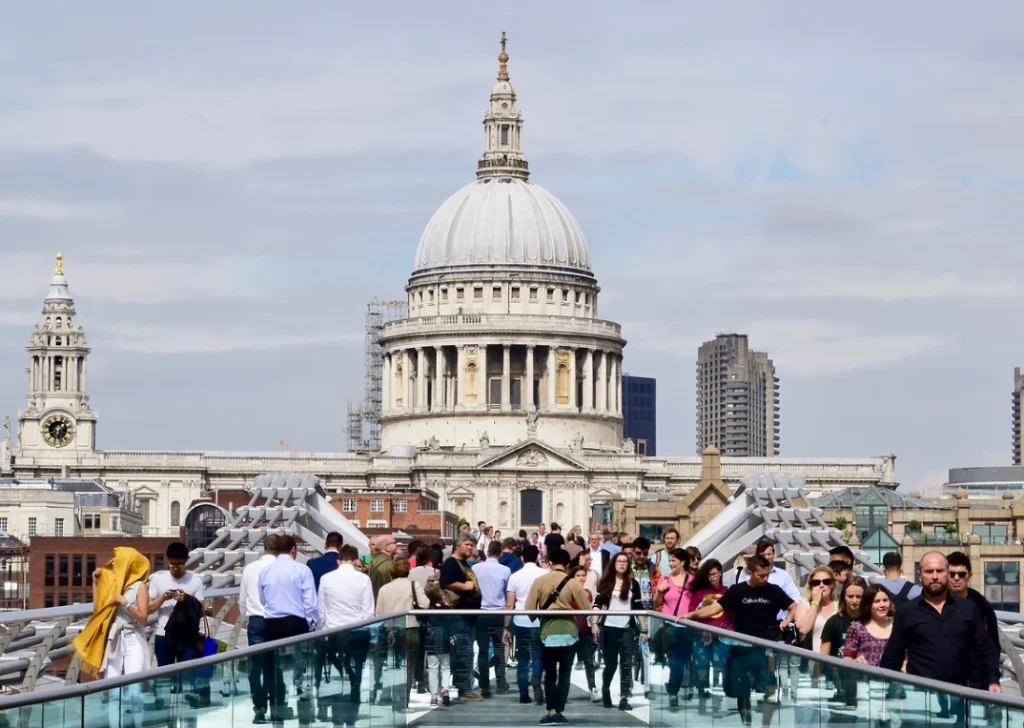
3. The church was dedicated to Paul the Apostle
One of the most remarkable facts about St Paul’s Cathedral is that there was a church on its location as early as 604 A.D. There’s mention that the first bishop was a man named Mellitus who lived in the Anglo-Saxon kingdom of East Saxon of which London was the capital at that time.
The dedication of the cathedral to Paul the Apostle dates back to this period in the early 7th-century. Several cathedrals were destroyed and rebuilt before the Norman invasion of England in 1066 after a brief period of Paganism, which lasted less than a century starting in the year 616 A.D.
4. The 3rd church was burned in the 11th century
A total of 3 cathedrals stood on the site before the Normans built was is referred to as the “Old St Paul’s.” It was built because the old church was destroyed by a massive fire in 1087.

The Old St Paul’s was a massive building, slightly longer but a bit less wide than the current Cathedral. It was built shortly after the fire and wasn’t consecrated until the year 1240.

5. The Old St Paul’s Cathedral was built in the Gothic Style
While the older cathedrals were built in the Romanesque architectural style, Old St Paul’s was a massive Gothic structure. This means it had much higher windows in the upper parts of the building along with pointy arches.
The vault of Old St Paul’s was ribbed and partially decorated but was largely constructed with wood instead of stone, which obviously meant the building was more prone to fires.
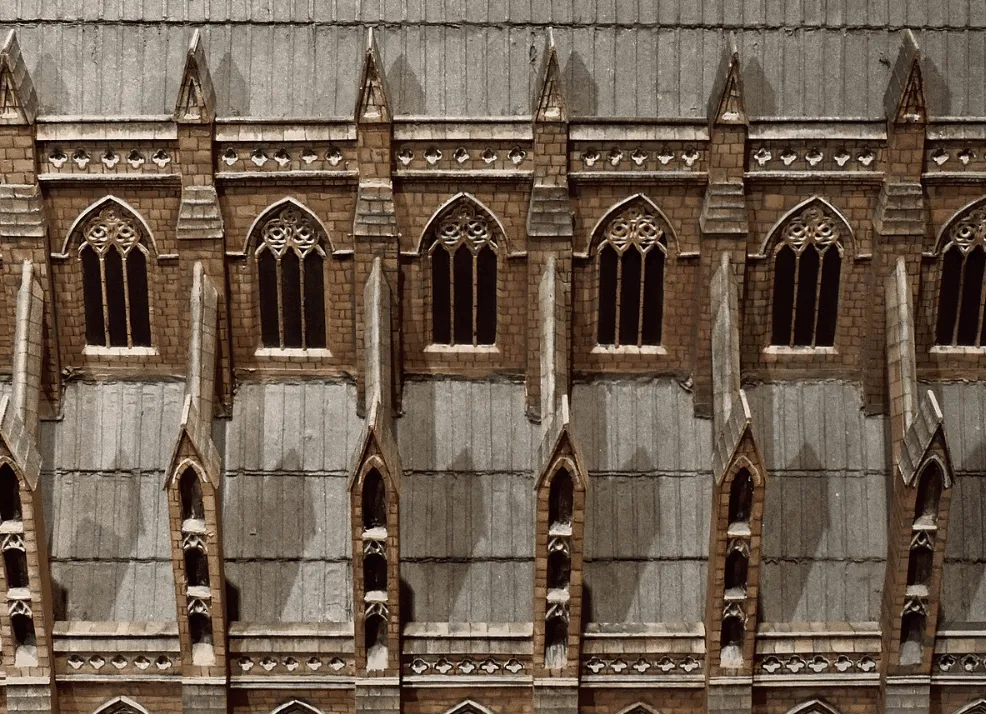
6. It was nearly the tallest building in the world in medieval times
An enlargement project of the already massive church was started in the year 1256 and was completed in the year 1314. This made it one of the biggest churches in the world in medieval times!
Old St Paul’s was at least 585 feet (178 meters) long and 100 feet (30 meters) wide, and had a spire that was 489 feet (149 meters) in height. This means just a few churches were higher, including the Lincoln Cathedral which was the tallest building in the world at the time, and just one that was longer, which was the Abbey Church of Cluny in France.
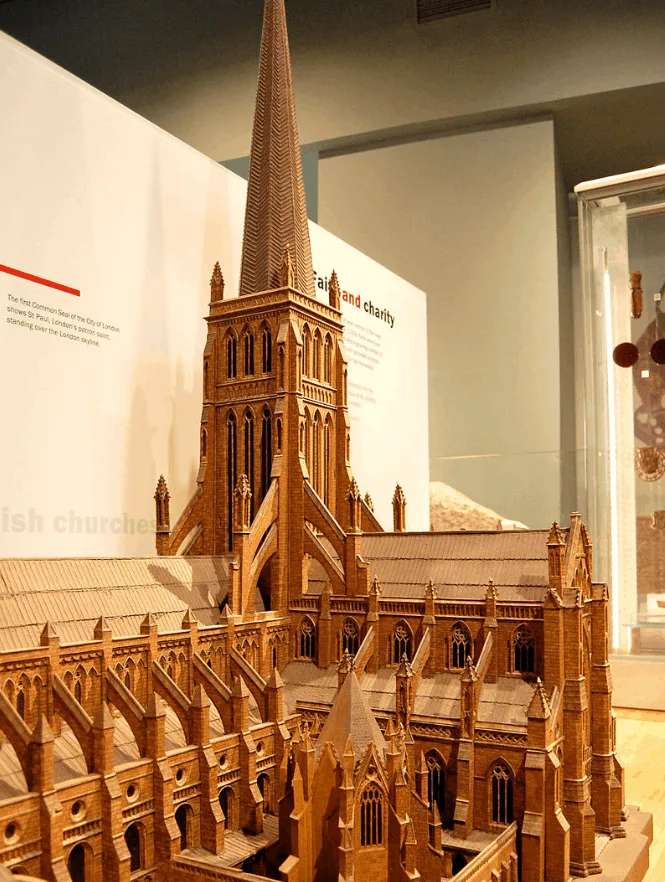
7. Lightning and the Great Fire destroyed the old church
With a spire that high and which towers above all other buildings in the city, it’s no surprise that it was struck by lightning quite a few times. It was eventually destroyed when it was struck heavily in the year 1561.
The building was further destroyed by Parliamentarian forces during the English Civil War (1642-1651). The coup de grâce for Old St Paul’s happened just 15 years after the English Civil War had ended though.
The Great Fire of London in 1666 destroyed the church, and even though there were some still hoping it could be restored, the damage was too extensive and a new Cathedral had to be built.
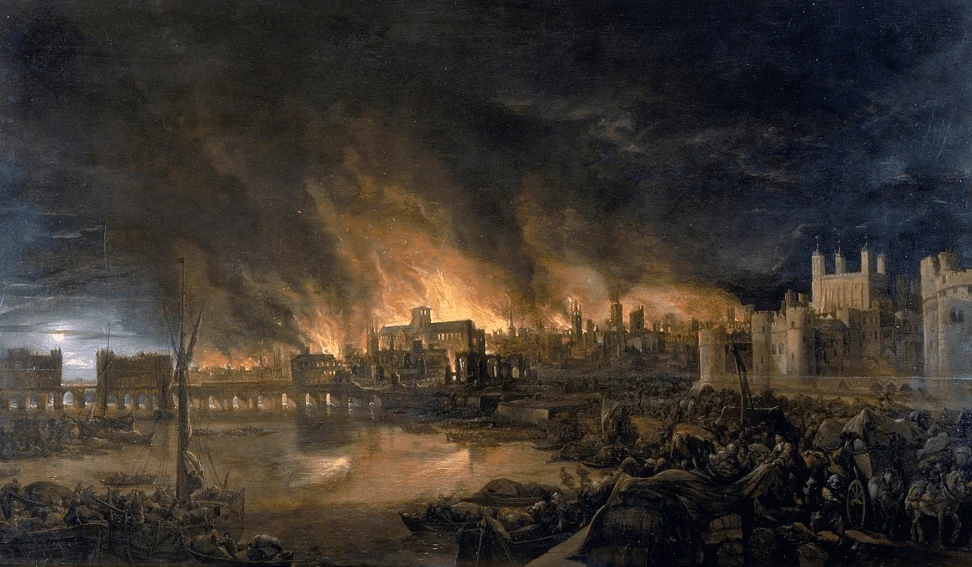
8. St Paul’s architect built over 50 churches in London
The Great Fire of London destroyed pretty much the entire historical city which was located within the Ancient Roman City Walls. This included 87 parish churches and Old St Paul’s.
With no possibility of restoring the old church, an architect was engaged who had the complicated task of designing a church that was “Handsome and noble to all the ends of it and the reputation of the City and the nation.”
Sir Christopher Wren (1632-1723), who was only 33 when the Great Fire of London happened, was assigned this difficult job on July 30, 1669. he would end up designing 52 churches within the City of London, making him one of the most renowned and prolific architects in Britain’s history!
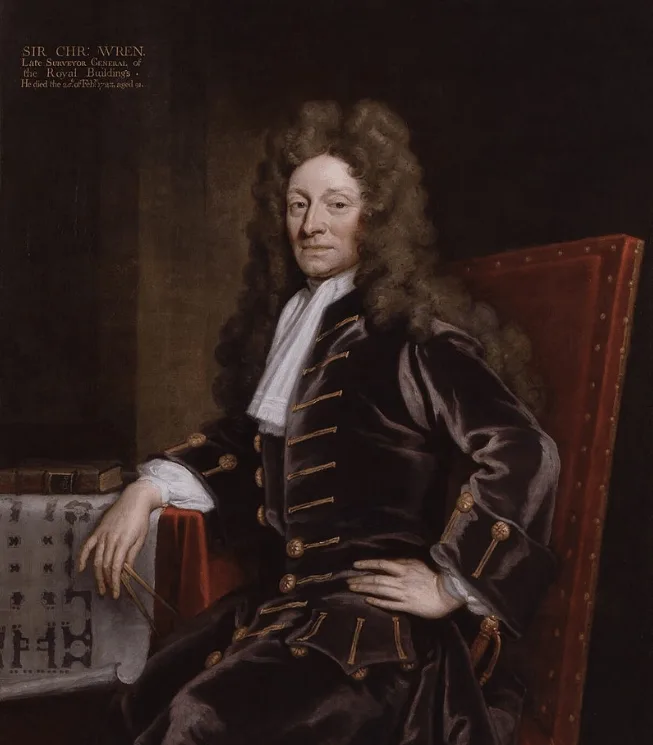
9. Multiple designs were created before one was officially picked
Designing the new St Paul’s Cathedral didn’t happen overnight. It took several years and multiple different plans before one was finally picked. It had to be both a place of worship and an iconic landmark for the city of London.
The fifth design was finally the right one, after making immense changes to the original approved design that he created referred to as the “Warrant Design.” This looked too similar to the Old Paul’s design and was basically an improved version of the old Gothic church.
The final version took a lot of inspiration from the St Peter’s Basilica in Rome, which was mostly designed by Bramante and Michelangelo.
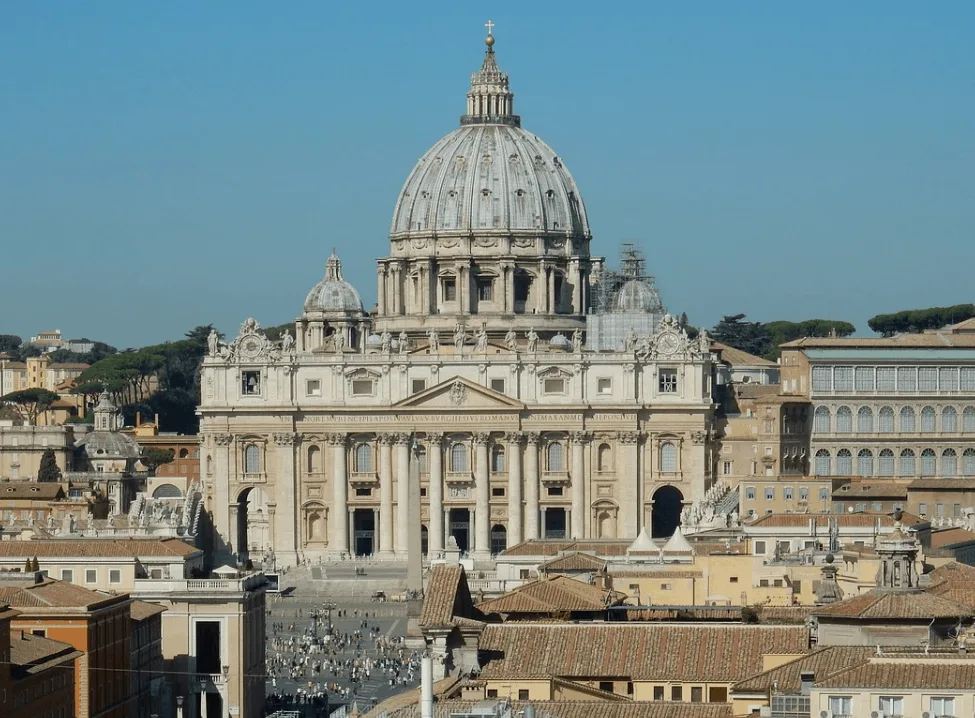
10. St Paul’s was built on a very strong foundation
One of the most fascinating facts about St Paul’s Cathedral is that it had to be built on a solid foundation because of the generally unsuitable clay soil for large structures in London.
To ensure the building’s stability, a crypt was integrated that runs below the entire cathedral as opposed to just a small part of it in all other churches. This way, the crypt serves a structural purpose as well.
Over half of the crypt consists of massive piers that support the smaller piers just above. A pretty genius feature to improve the building’s foundation!
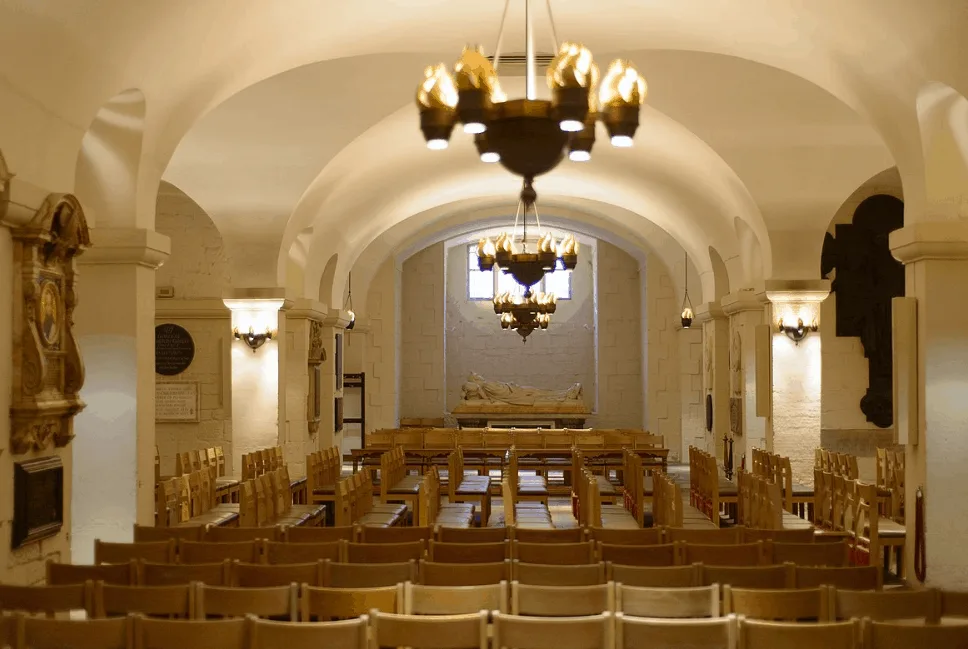
11. The Cathedral’s most prominent feature is its massive dome
The construction of the Cathedral finally began in the year 1675 and took about 35 years to complete, even though the Cathedral was consecrated on December 2, 1697. This means that the church was completed within its architect’s life and Sir Christopher Wren was able to enjoy the completed work!
This also means he was able to admire the massive dome he designed which became the Cathedral’s most prominent feature. The dome reaches a height of 365 feet (111 meters) and this made St Paul’s Cathedral the tallest building in London from 1710 until 1963!
The dome itself consists of 2 clearly defined stories of masonry, making it a marvelous architectural achievement and one of the most beautiful and best-recognized domes in the world.
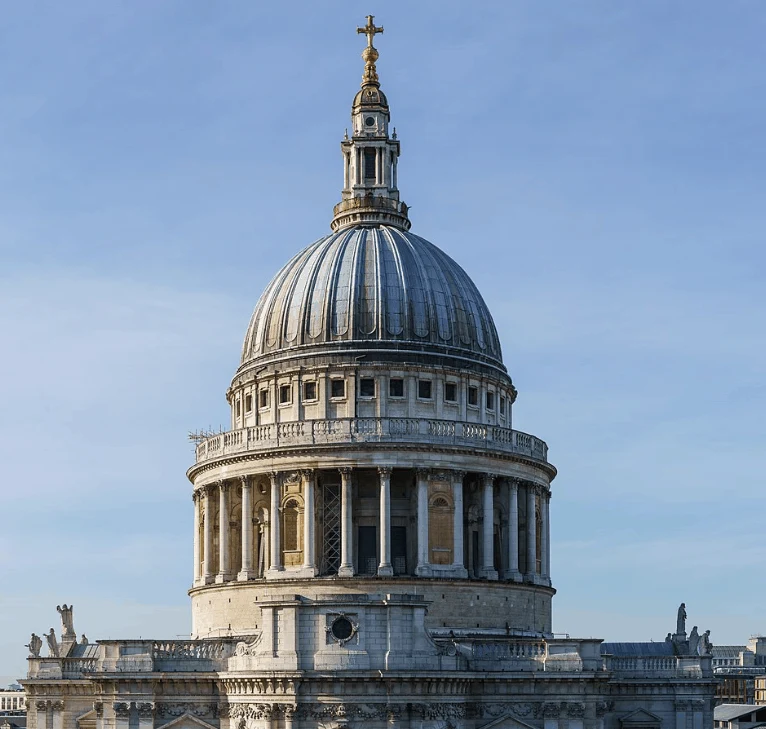
12. The interior of the dome is equally impressive
While it’s up for debate where Wren got his inspiration for the exterior design of the dome, the interior design was inspired by the world-famous dome of the Pantheon in Rome.
There’s an oculus at the apex of the dome and 8 painted decorations by Sir James Thornhill were integrated into the architectural design. These paintings depict 8 scenes from the life of Paul the Apostle.
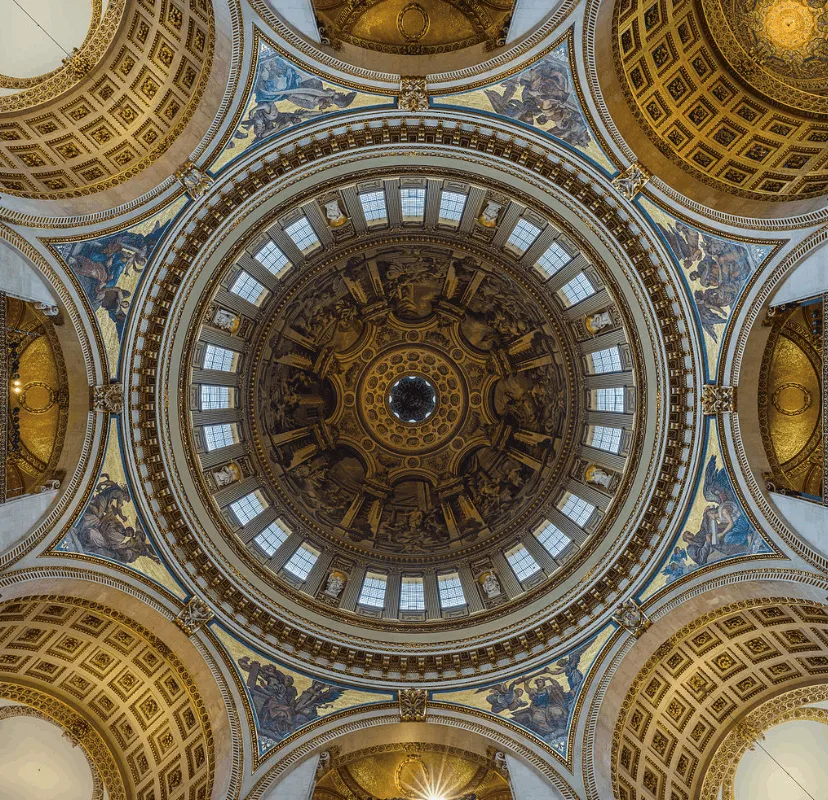
13. It turned out to be an enormously expensive building
The Cathedral is about 574 feet (175 meters) long of which 223 feet (68 meters) is the nave and 167 feet (51 meters) in the choir. The width of the building is 121 feet (37 meters) and extends 246 feet (75 meters) across the transepts.
After completion (the topping-out stone was laid on October 26, 1708), the building was further decorated with statues and ornamented designs, something that lasted well into the 1720s.
It’s estimated that the total cost of the building was about £1,095,556, which amounts to over £165 million today, an enormous sum!
Who paid for this? The people because most of the money came from an increase in taxes on coal.

14. It’s the second-largest church in England
If we consider the area then St Paul’s Cathedral is the second-largest church in England. Liverpool Cathedral is the only church that surpasses its size, which in return is the 8th largest church in the world.
Yes, it’s pretty huge!

15. It used to be home to the largest bell in the United Kingdom
Just like Big Ben, the bell from the most famous bell tower in London, St Paul’s Cathedral has several bells. One of them weighs 16.5 long tons (16,800 kilos) and was cast in 1881 and called “Great Paul.”
It didn’t get this named for no reason because the moment it was cast, it became the largest bell in the United Kingdom. It held this record until 2012 when the Olympic Bell for the 2012 London Olympics was cast.

16. A lot of important events happened at St Paul’s
St Paul’s Cathedral is one of the most important buildings in the United Kingdom. This is emphasized by the fact that it is the location of numerous important events in the country.
The funerals of Admiral Nelson, the Duke of Wellington, Winston Churchill, and Margaret Thatcher, took place here, and Admiral Nelson, an important British Navy Commander during the Napoleonic Wars, has his tomb in the crypt.
It was the location of the wedding of Prince Charles and Lady Diana Spencer in 1981, and also the thanksgiving services for the Silver, Golden, and Diamond Jubilees, and the 80th and 90th birthdays of Queen Elizabeth II.

17. You can discover the cathedral’s 1400 year’s history through Oculus
Apart from being a Grade I Listed Building and one of the most popular landmarks in London, visitors can enter the church for either worship or as a tourist. Tourists will have to pay a fee, but in return get something quite special.
A large number of touchscreen multimedia devices have been integrated into the interior of the church and provide tourists with all the info needed to learn about the Cathedral’s entire 1400 years of history!
